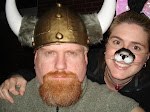Friends:
One of the books I am currently reading is Body Prayer by Doug Pagitt. In this insightful read some postures for prayer are explained. Which one fits your style of prayer?
Many people are accustomed to closing their eyes and bowing their heads during prayer. For the originators of this practice, this was not an empty custom but a physical way of focusing of God. By their actions, these people of prayer showed that their immediate surroundings were not as important as God.
For other early believers, folding their hands during prayer was a statement that they would not hold onto anything else when they were praying. It was a physical way to say to God, “Your kingdom come, your will be done in my life.”
Still others pray with their eyes open, their faces turned up to the sky, and their hands spread wide. This posture indicates a willingness to accept all that God has made.
For pray-ers in the first century, it was common to pray facedown with one’s knees pulled close to the chest and one’s forehead touching the ground. Doing so put one close to the ground and in the most humble position possible.
The custom of kneeling and bowing one’s head in prayer is strengthened by the imagery of a person approaching a king to make a request. When doing this in prayer, the subject puts herself at the mercy of the King by exposing her neck, and act which shows her complete vulnerability to the Sovereign’s power.
The New Testament practice of placing hands on the one being prayed for is yet another physical act of faith and prayer.
Still others pray while walking or singing or standing.
Pagitt further points out that “From the beginning Christians have recognized that prayer is not simply a matter of words; it is an integration of all of life, through the body.”
How do you pray? Let us learn from each other new ways to mesh the body and spirit.




No comments:
Post a Comment